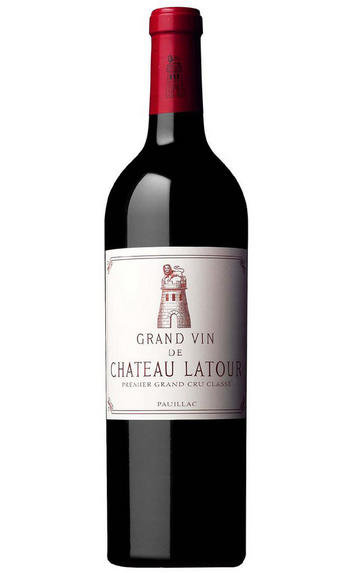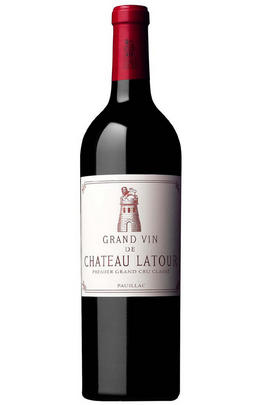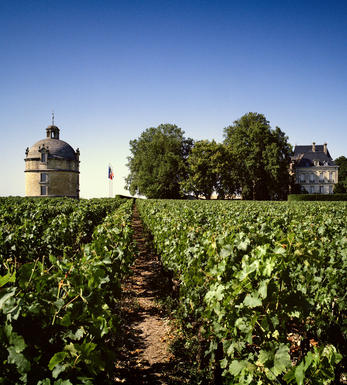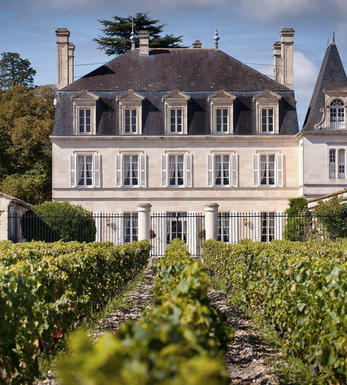
1982 Château Latour, Pauillac, Bordeaux

Critics reviews
The 1982 Latour is the most consistent of the First Growths in this auspicious vintage. Tasted from both bottle and magnum in the UK in recent months, this note comes from an ex-château magnum tasted at a private dinner in Bordeaux. It exudes class and majesty on the nose with its copious but brilliantly focused black fruit laced with cedar and graphite. To use a phrase I have written before, it is blue-blooded...regal. That comes through on a palate that has a haunting symmetry and a killer finish that is brilliantly defined and audaciously long, graphite lingering on the aftertaste. Quite simply, claret does not come better than this. Tasted at a private dinner in Bordeaux.
Drink now to 2055
Neal Martin, Vinous (April 2022)
One of the three or four very greatest wines of the vintage, the 1982 Latour delivers aromas of dark berry fruit, rich cigar wrapper, loamy soil, walnuts and smoke. Full-bodied, broad and layered, it's deep, seamless and immensely concentrated, its fleshy core framed by sweet, powdery tannins, concluding with a long, expansive finish. A monument to the greatness of Bordeaux, it is one wine that's worthy of all the praise that has been lavished on it over the years.
Drink now to 2045
William Kelley, Wine Advocate (December 2022)
A bottle brought, along with one of Mouton 1982, by a guest to a grouse dinner – on a Monday night!
Absolutely stonking. Beautifully layered, complex, fully mature nose. On the palate there was more sweetness than one usually associates with Ch Latour – a vintage factor presumably – and then a light tarry character towards the end of the palate that resonates with top-quality Pauillac and Latour's usual mineral signature. Just gorgeous and complete, at the height of its powers.
Drink now to 2036
Jancis Robinson MW, JancisRobinson.com (September 2020)
This shows wonderful decadence with meaty, dark chocolate and ripe plums on the nose that follows through on the palate. It's full bodied, with super silky tannins that caress your palate. The fruit in the wine changes to a spicy, stony undertone. It seems to evolve all the time in the glass. This has a long life to it. But why wait? So delicious.
James Suckling, JamesSuckling.com (November 2010)
About this WINE

Château Latour
Château Latour is a wine estate in Pauillac, part of the Haut-Medoc sub-region on the Left Bank of Bordeaux. The estate’s history dates back to at least the 14th century, though vineyards were not established here until the 17th century. The estate is located at the southern edge of the Pauillac appellation, bordering the St Julien vineyards of Château Léoville Las Cases. Latour is one of the five First Growths of the 1855 classification, occupying the top tier alongside Châteaux Lafite Rothschild, Margaux, Haut-Brion, and Mouton Rothschild.
Latour is owned by François Pinault, one of France’s wealthiest people. It forms the jewel in the crown of Pinault’s Artémis Domaines, itself part of the larger Groupe Artémis. Other wineries within the portfolio include Clos de Tart and Domaine d’Eugénie in Burgundy; Château Grillet in the Rhône Valley; Champagne Jacquesson; Eisele Vineyard in California’s Napa Valley; and Maisons et Domaines Henriot, which includes holdings in Champagne, Burgundy, and Oregon.
The day-to-day running of Latour is entrusted to the dynamic Frédéric Engerer. Under his stewardship, a major programme of investment has taken place. In 2012, Latour announced that it would no longer offer its wines as part of the Bordeaux En Primeur campaign. Instead, the wines are kept at the estate until such a time as they are ready to be opened and enjoyed. They are then offered through the La Place de Bordeaux distribution system several years after the vintage.
There are three wines produced here. Château Latour, the grand vin, is produced from vines immediately surrounding the château, from the vineyard area known as L’Enclos. Les Forts de Latour, the second wine, was created in 1966. It is now regarded as a great wine in its own right, certainly worthy of Classified Growth status. A third wine, Pauillac de Latour, is usually the product of young vines.
The vineyard is planted to a majority of Cabernet Sauvignon, along with some Merlot and small amounts of Cabernet Franc and Petit Verdot.

Pauillac
Pauillac is the aristocrat of the Médoc boasting boasting 75 percent of the region’s First Growths and with Grand Cru Classés representing 84 percent of Pauillac's production.
For a small town, surrounded by so many familiar and regal names, Pauillac imparts a slightly seedy impression. There are no grand hotels or restaurants – with the honourable exception of the establishments owned by Jean-Michel Cazes – rather a small port and yacht harbour, and a dominant petrochemical plant.
Yet outside the town, , there is arguably the greatest concentration of fabulous vineyards throughout all Bordeaux, including three of the five First Growths. Bordering St Estèphe to the north and St Julien to the south, Pauillac has fine, deep gravel soils with important iron and marl deposits, and a subtle, softly-rolling landscape, cut by a series of small streams running into the Gironde. The vineyards are located on two gravel-rich plateaux, one to the northwest of the town of Pauillac and the other to the south, with the vines reaching a greater depth than anywhere else in the Médoc.
Pauillac's first growths each have their own unique characteristics; Lafite Rothschild, tucked in the northern part of Pauillac on the St Estèphe border, produces Pauillac's most aromatically complex and subtly-flavoured wine. Mouton Rothschild's vineyards lie on a well-drained gravel ridge and - with its high percentage of Cabernet Sauvignon - can produce (in its best years) Pauillac's most decadently rich, fleshy and exotic wine.
Latour, arguably Bordeaux's most consistent First Growth, is located in southern Pauillac next to St Julien. Its soil is gravel-rich with superb drainage, and Latour's vines penetrate as far as five metres into the soil. It produces perhaps the most long-lived wines of the Médoc.
Recommended Châteaux
Ch. Lafite-Rothschild, Ch. Latour, Ch. Mouton-Rothschild, Ch. Pichon-Longueville Baron, Ch. Pichon Longueville Comtesse de Lalande, Ch. Lynch-Bages, Ch. Grand-Puy-Lacoste, Ch, Pontet-Canet, Les Forts de Latour, Ch. Haut-Batailley, Ch. Batailley, Ch. Haut-Bages Libéral.

Cabernet Sauvignon Blend
Cabernet Sauvignon lends itself particularly well in blends with Merlot. This is actually the archetypal Bordeaux blend, though in different proportions in the sub-regions and sometimes topped up with Cabernet Franc, Malbec, and Petit Verdot.
In the Médoc and Graves the percentage of Cabernet Sauvignon in the blend can range from 95% (Mouton-Rothschild) to as low as 40%. It is particularly suited to the dry, warm, free- draining, gravel-rich soils and is responsible for the redolent cassis characteristics as well as the depth of colour, tannic structure and pronounced acidity of Médoc wines. However 100% Cabernet Sauvignon wines can be slightly hollow-tasting in the middle palate and Merlot with its generous, fleshy fruit flavours acts as a perfect foil by filling in this cavity.
In St-Emilion and Pomerol, the blends are Merlot dominated as Cabernet Sauvignon can struggle to ripen there - when it is included, it adds structure and body to the wine. Sassicaia is the most famous Bordeaux blend in Italy and has spawned many imitations, whereby the blend is now firmly established in the New World and particularly in California and Australia.


Buying options
Add to wishlist
Description
The 1982 Latour is the most consistent of the First Growths in this auspicious vintage. Tasted from both bottle and magnum in the UK in recent months, this note comes from an ex-château magnum tasted at a private dinner in Bordeaux. It exudes class and majesty on the nose with its copious but brilliantly focused black fruit laced with cedar and graphite. To use a phrase I have written before, it is blue-blooded...regal. That comes through on a palate that has a haunting symmetry and a killer finish that is brilliantly defined and audaciously long, graphite lingering on the aftertaste. Quite simply, claret does not come better than this. Tasted at a private dinner in Bordeaux.
Drink now to 2055
Neal Martin, Vinous (April 2022)
wine at a glance
Delivery and quality guarantee